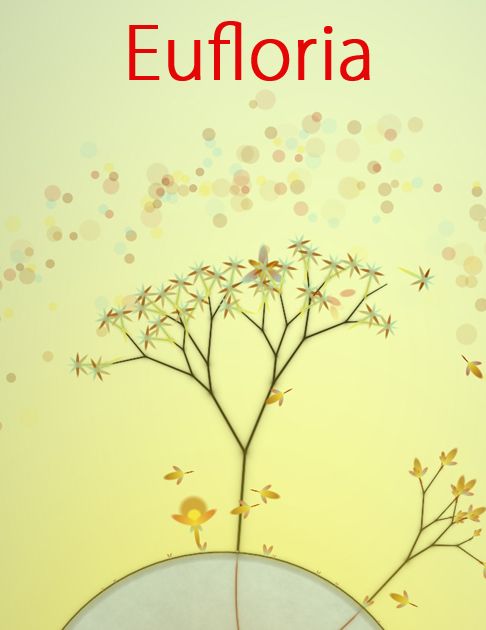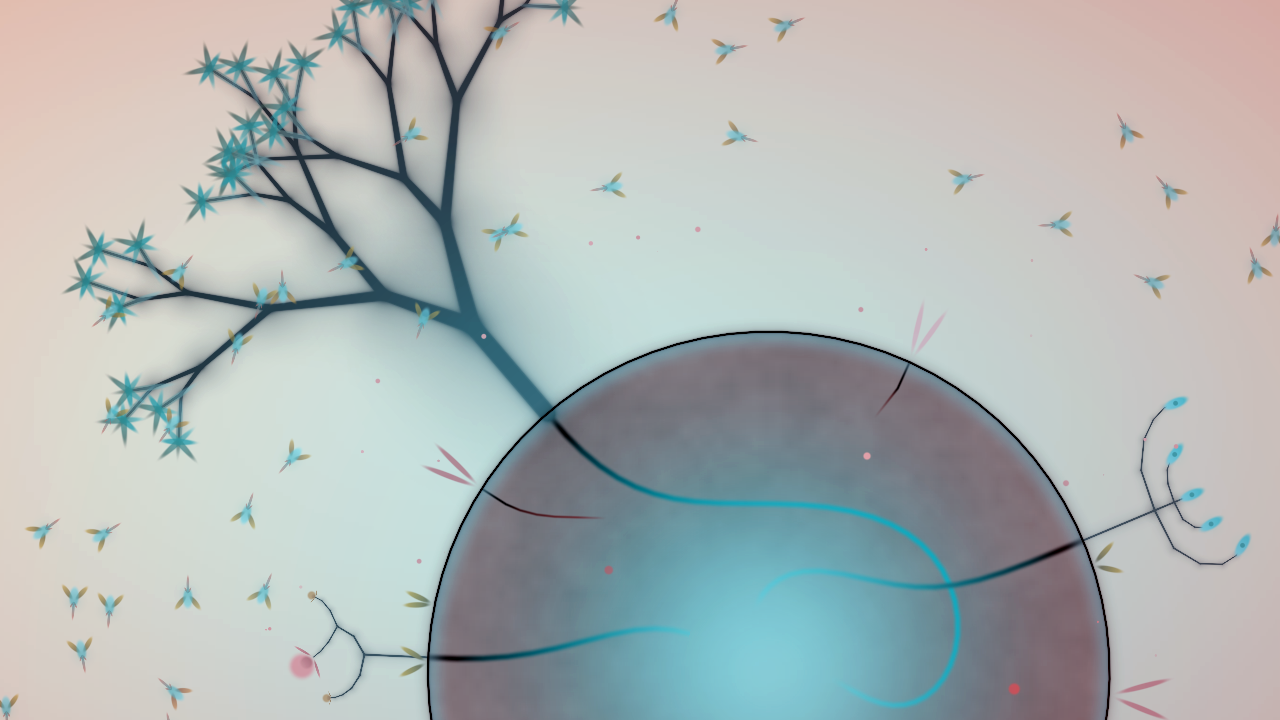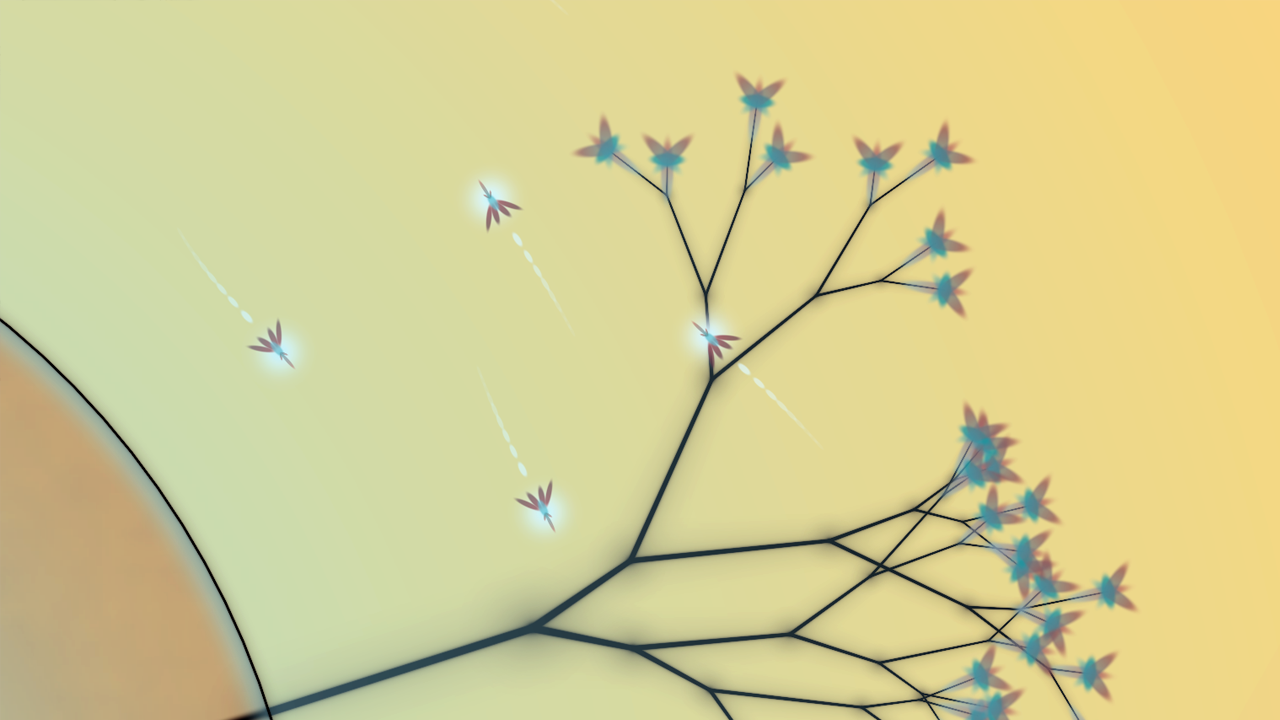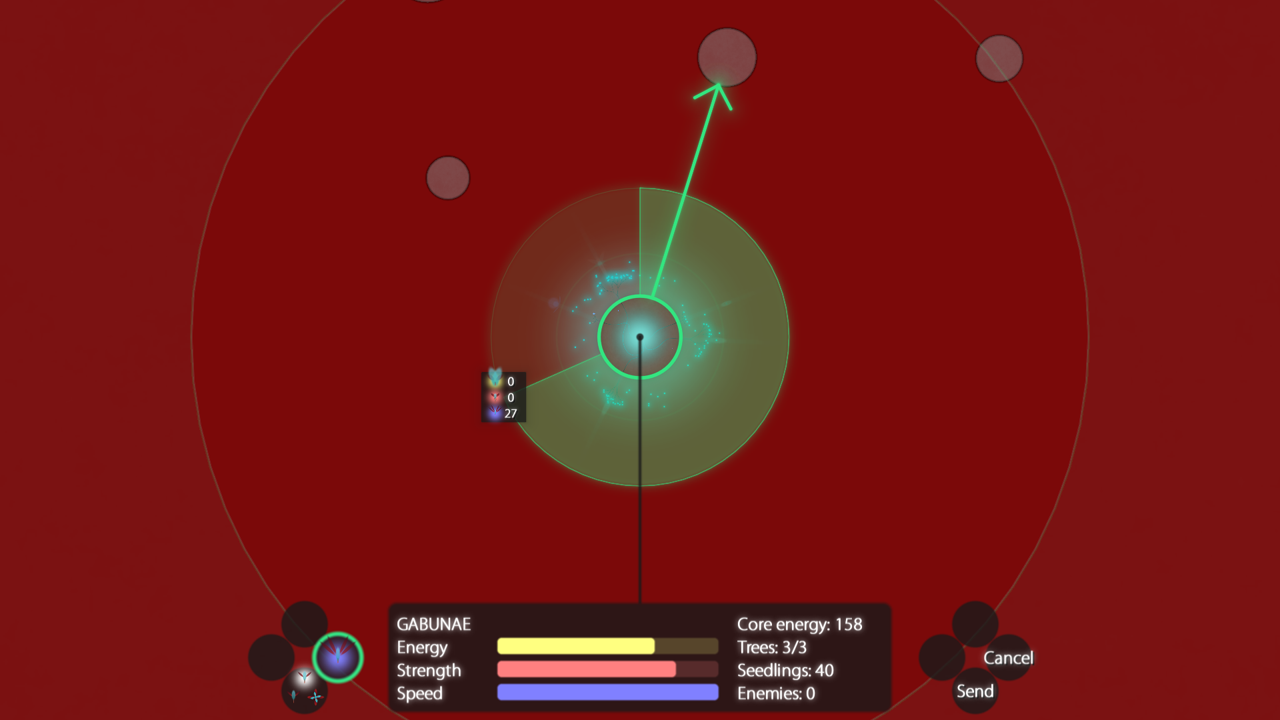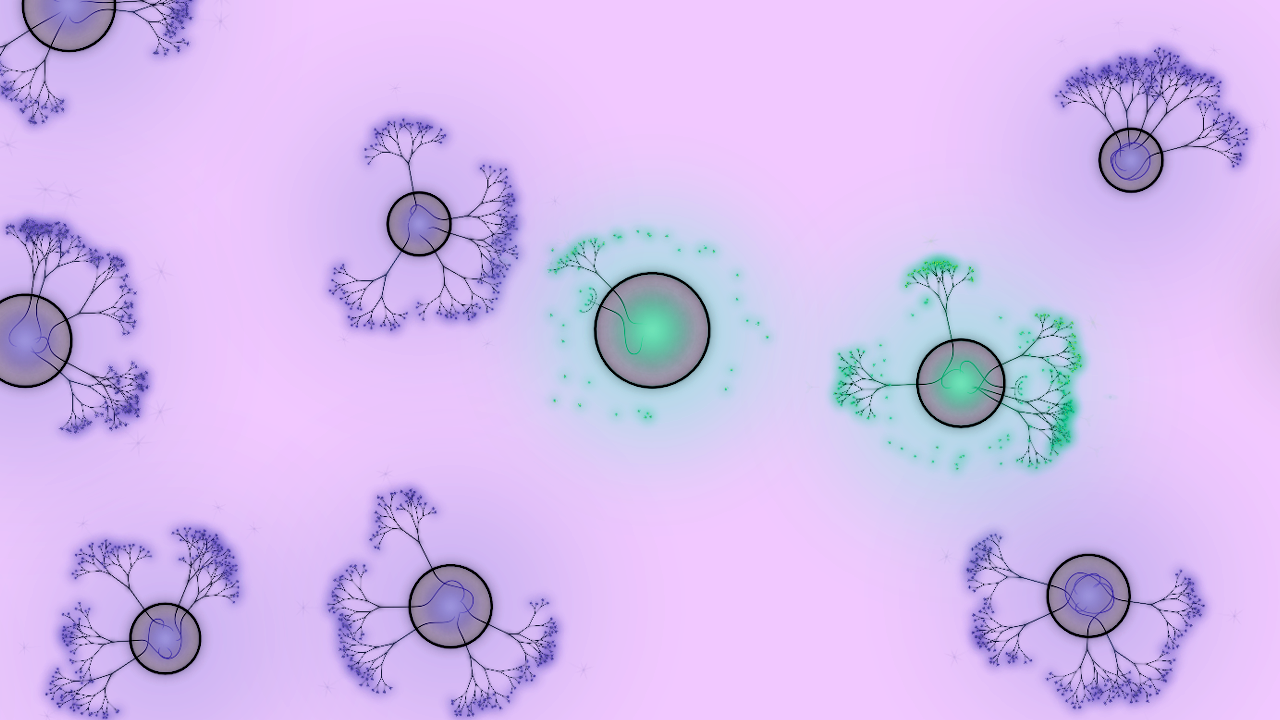I was a bit intrigued by Eufloria at the start, as I wasn’t even aware it existed before the updated PS3 version in the form of a PC game until I did some research on it. I’m a fan of more abstract, unique titles that stretch your imagination of what a game could be. Surreal experiences like Flower and Child of Eden are example of this transcendent form of experience, and I think Eufloria might fit into that category, as well.
At its very basic, Eufloria is a real-time strategy game. I know, right? When I was thinking about how to classify it, that didn’t quite click in my mind to begin with, either. Whatever else anyone has to say about it, however, it is one of the most interesting and creative takes on the strategy genre I’ve ever seen in my 20-some years of playing video games. That, my friends, says a lot right there.
What I find most interesting here is the contrast between what is usually in an RTS title and what Eufloria presents you with. When you think RTS, you generally think of something like StarCraft, where you have units and you’re out to destroy the opposing group or team. While, in a way, that is the case here, instead of military units of mass destruction, you’re controlling simple trees and seedlings, which often signify life, restoration and nature. In other words, you’re building life instead of taking it away. That juxtaposition immediately hits you and, if you follow that thought process, is what really makes this game the unique experience it is.
As mentioned, you control seedlings. The idea is to spread life to other asteroids, which are signified by dark circles that stand in contrast to the lighter, yet muted, background “space”. When you have 10 seedlings orbiting the same asteroid, you can plant a tree. This tree, then, produces leaves and then more seedlings at a rate that changes based on how long the tree has been around. You can have a certain maximum number of trees on any given asteroid (and this maximum amount changes depending on how far along you are in the game’s campaign).
So, general game progress goes like this: You plant a tree, grow more seedlings to plant more trees. You thus, naturally, grow more seedlings. Once you have at least 10 seedlings, which is the amount to grow another tree, you can send those seedlings to another asteroid that is connected to the first one. You can send more or less, but you need 10 seedlings minimum to plant a tree and “colonize” the new asteroid. A common practice down the line is to send a single seedling as a scout, to check out the land mass you have your eye set on. By this manner you spread life throughout the area.
However, things aren’t that simple – you do eventually run into “bad guys”, the “gray leaves”, which are your opponents. This is when sending a scout ahead comes into play, as you can then check out how many trees they have on an asteroid and get a feel for their defenses. When you have produced enough seedlings and think you have enough to kick the bad leaves out, you can send them over, and a fight ensues. If your offenses overtake their defenses, you can then colonize the asteroid.
This works both ways, too, as they will send scouts out to check out your already established colonies and attack if they feel your defenses are too low. So the entire game is a balancing act between taking over new asteroids and defending the territory you already have.
All this is done on a graphically surreal backdrop. It’s very simple and aesthetically pleasing. When you’re zoomed out, you see nothing but some dark circles on a washed-out, colored backdrop, with little dots zipping around the asteroids. When you zoom in you’re treated to almost a paintbrush-like graphical representation of the seedlings, the trees and the roots digging deep into the dirt. Some may call this a little too simple, but I call it calming and refreshing. I found myself zooming in more often than a really had to to see the roots, trees and seedlings all working and flowing together in a stylistic representation of a biological ecosystem, as simple as it may be.
In other words, the presentation is amazing, and that is something huge that this game has going for it, whether on the PC or the PS3.
The music also was rather soothing. Playing the game with my headset was almost as surreal an experience as the game mechanics themselves, to the point that I could almost fall asleep while playing. (Although, then I’m sure my colorful little leaves would get devoured by the ugly gray ones.)
There are a few different modes. First, of course, you have the campaign, which isn’t super long, but is the meat and potatoes of the game. You also have dark matter mode, which throws another monkey wrench into your task to spread the galactic, life-giving goodness. There’s also skirmish mode, as well, which gives you several maps to play on and, at least to me, seemed to have more aggressive enemy seedlings.
This problem with this whole package? The gameplay itself may be too simple. I understand what the developers were going for – a more zen-like approach to the RTS genre. I also really love the simplicity of the graphics and the music. However, you can have those things and still carry over that really stylistic, simplistic feel, all the while having deep, involving gameplay mechanics. I felt those mechanics weren’t deep or engrossing enough to keep people coming back for more. I played the campaign, dabbled in the other modes and feel no pull to go back and play, as pretty as the game is.
http://www.youtube.com/v/0ECVbdCxmdg?version=3&hl=en_US
With deeper, more involved mechanics, perhaps a more varied assortment of seedlings with multiple abilities and different requirements to produce – you know, like a real RTS – I would have felt like the gameplay matched the greatness of the style. I don’t want to say that there is no substance, as it certainly is an invigorating take on the genre and makes you think outside the box as to what a game can be – and that’s great, like I mentioned at the outset. However, I don’t think it was balanced with the style of the game. Just because the artwork and audio is simple, doesn’t mean the gameplay has to be.
I still certainly recommend Eufloria, especially for those who, like me, like these special, euphoric experiences that don’t come about every day. There just isn’t a whole lot to go back to and you will likely get bored rather quickly. There’s a decent amount of content, but the gameplay isn’t deep enough to keep people coming back, in my opinion. Still, Eufloria is a stylistic marvel of a game and, given he right mindset in the player, can really be an eye-opening experience.

